Gneiss is a very widespread rock type, especially in the lower parts of the continental crust, but it is also a common rock on the surface in some places (Scandinavia, Canada, and other shield areas where crystalline rocks are not covered by a layer of sedimentary rocks).
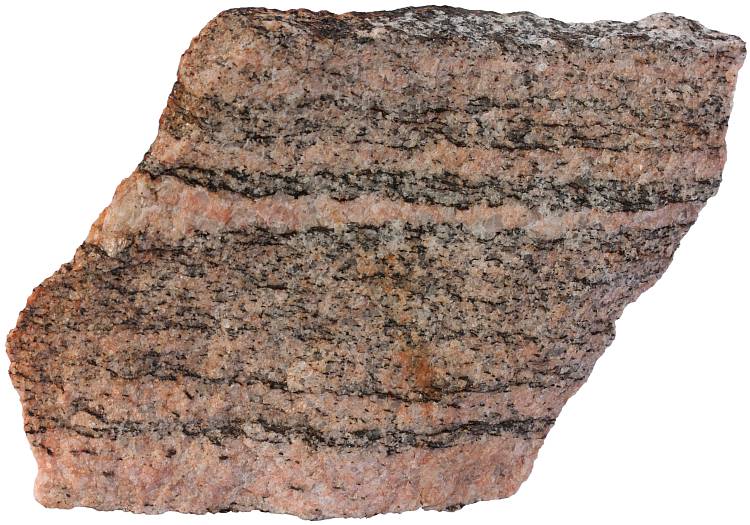
A sample from Karelia, Russia. This specimen has a composition of an ordinary granite: pink K-feldspar, gray quartz, and black biotite. Width of sample 11 cm.
The term “gneiss” was brought to scientific usage from the German language. It was originally a mining term, meaning a country rock in the Ore Mountains (Erzgebirge) which contained metalliferous veins. The term (gneist) was first recorded in print by Agricola (Georg Bauer) in his famous posthumously published book De Re Metallica which remained the most important mineralogy and mining textbook for the next two centuries. The book was published in 15561.
Most of the mineral grains of gneissose rocks are visible to the naked eye. Banding in this rock is a result of mineral segregation into separate, typically light- and dark-colored layers. Light-colored layer is usually composed of feldspars and quartz. Most important dark minerals are hornblende and biotite. Individual bands are usually 1-10 mm in thickness. Layers larger than that imply that partial melting or the introduction of new material have probably taken place. Such rocks are called migmatites. It is often difficult to distinguish it from migmatite because there is a gradational transition from one to another. Hence, terms like “migmatized gneiss” are commonly used. It is not well understood how the segregation takes place, but it must be the result of extreme pressure and shear stress deep in the crust.
The protolith of gneiss may be an igneous rock, in this case it is called an orthogneiss. It forms probably because of shear in vicous granitic magma. Paragneiss is a variety with a sedimentary protolith. Even in the latter case, gneissic banding has nothing to do with original layering of sedimentary rocks. These original features are completely obliterated by the metamorphic processes involved in the formation of this rock type.
Paragneiss in most cases is thought to be the end product of metamorphism of a pelitic (clay-rich) sedimentary rock (shale, argillite, claystone, etc.) that metamorphosed first into slate, then became phyllite, schist, and finally gneiss. Still deeper burial or more intense heating may result in migmatization and finally complete melting of gneiss.
Despite being clearly oriented, this rock is not considered to be foliated because it is not fissile along the layering. So, when hammered, gneiss behaves like a uniform homogenous rock. In this sense it is similar to igneous rocks like granite and gabbro and not similar to related metamorphic rocks like schist and phyllite which are foliated.
It is important to note that gneiss is a rock type that is defined by its oriented texture, rather by its mineralogy or chemical composition. Hence, qualifying terms are often added to the rock name: amphibolite gneiss or hornblende gneiss, for example. The term “gneiss” without any additional information is commonly imagined to be compositionally similar to granite (K-feldspar, quartz, biotite).
Gneiss is a product of regional metamorphism. This is a type of metamorphism which is associated with mountain building. Gneisses form deep below the forming mountain ranges and are exhumed many millions of years later when the mountains get carried away by the erosion.
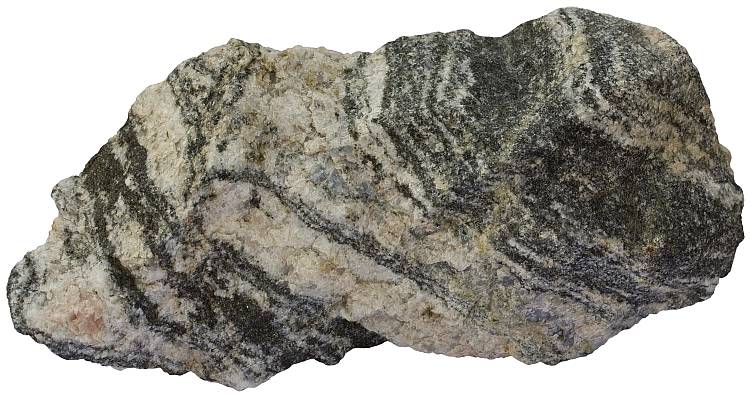
The cores of the continental landmasses are typically composed of such grayish gneisses. This very old (from the Archaean) sample is from Karelia, Russia. Width of sample 16 cm.
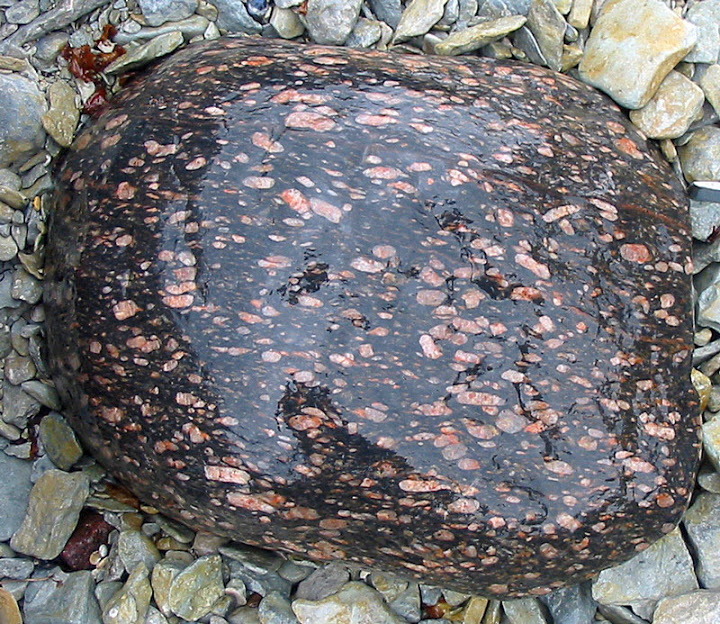
An augen gneiss from Estonia (glacial erratic from the Finnish Bedrock). Width of sample 30 cm.
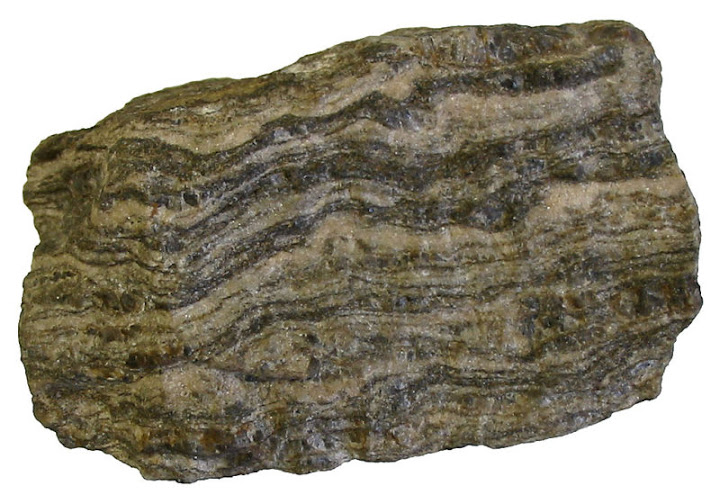
A sample from an unknown location, possibly from Karelia.
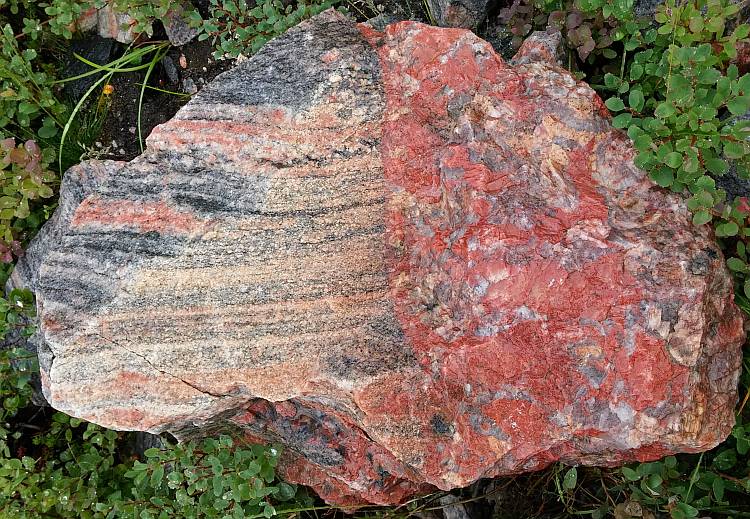
A contact between gneiss and pegmatite. Nyelv, Norway.
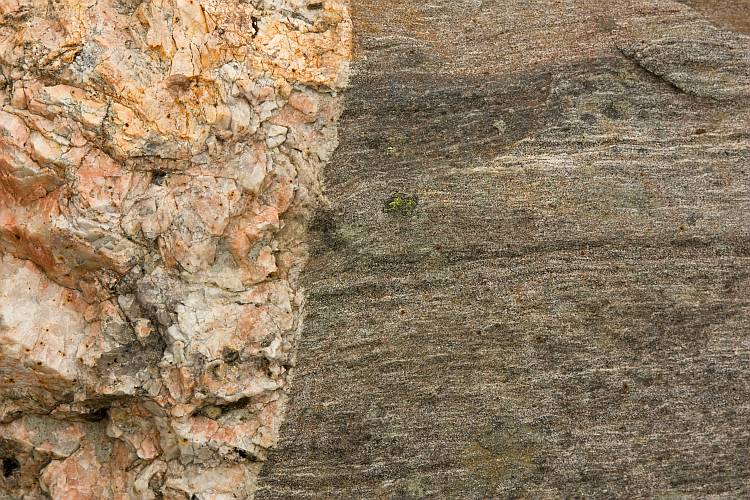
A contact between gneiss and granitic pegmatite. Trollstigen, Norway.
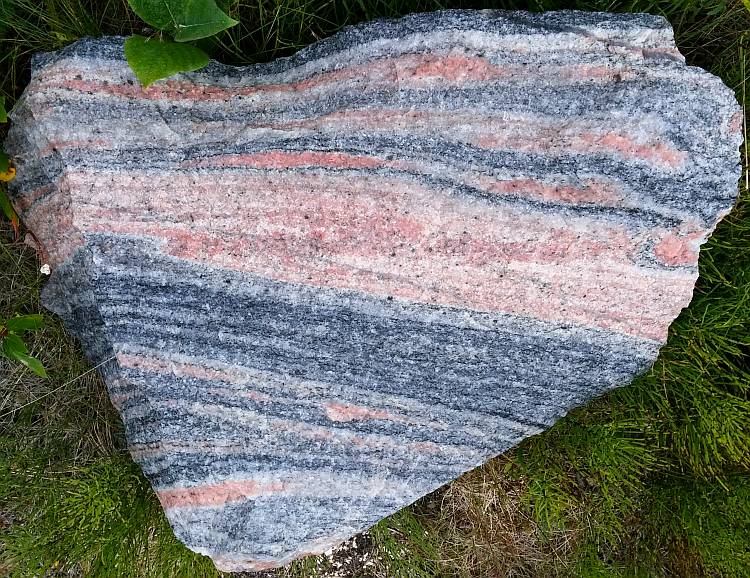
A sample of migmatitic gneiss. Nyelv, Finnmark, Norway. Width of sample 30 cm.
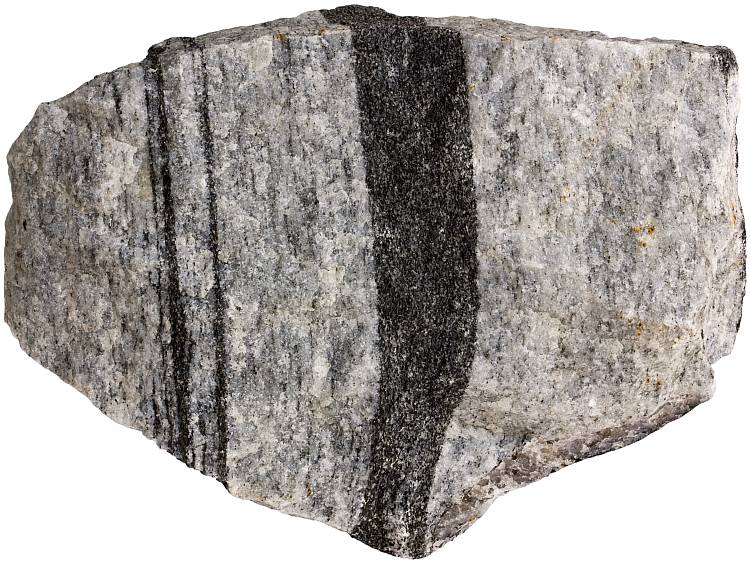
Biotite gneiss. Evje, Norway. Width of sample 14 cm. It would be logical to assume that dark biotite-rich bands represent metamorphosed muddy layer in a sandy sediment but this is not necessarily the case. In lower grade metamorphic rocks the original fabric of the protolith is indeed often recognizably preserved, but higher grade rocks like gneiss show compositional banding which does not need to represent the original banding of the protolith. Furthermore, metamorphic differentiation can create compositional layers where none previously existed2.
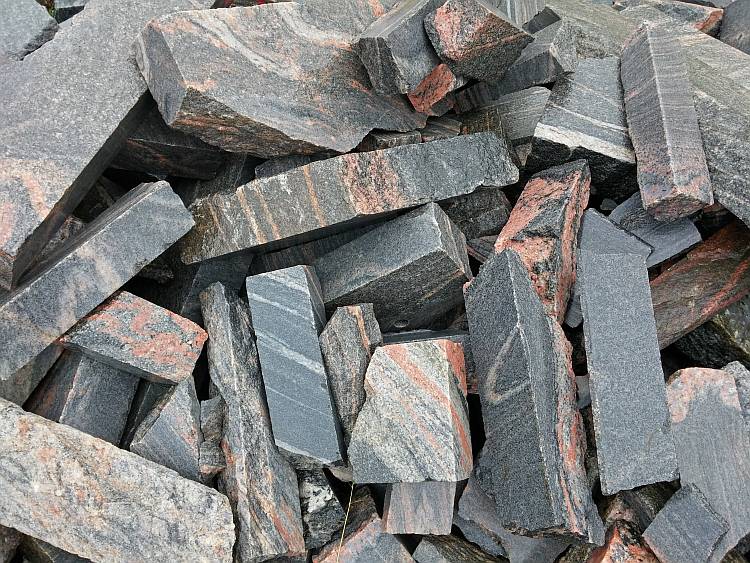
Gneiss is widely used as a dimension stone. It has a nice combination of hardness and durability with beautiful texture.
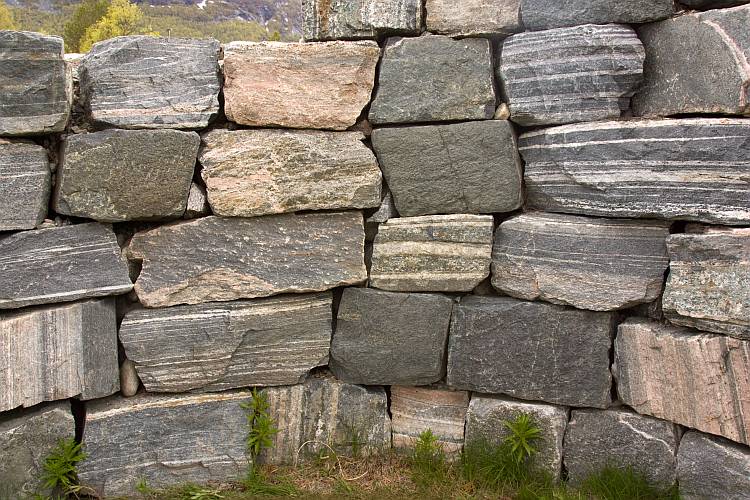
Wall made of gneiss blocks in Sweden. Even the rocks that do not seem to have a banded appearance do have it when looked from a different direction.
References
1. Tomkeieff, S. I. (1983). Dictionary of Petrology. John Wiley & Sons.
2. Best, Myron G. (2002). Igneous and Metamorphic Petrology, 2nd Edition. Wiley-Blackwell.
Hi, I’m in the 6th grade, and I was doing some research on the Gneiss rock for science homework. What I was looking for was the uses for the Gneiss rock. When I searched this website all I found was the Gneiss’ history, not it’s uses. Although this site is very educating, I didn’t find what I needed.
Basically gneiss is used as a dimension stone for beautifying faces of buildings due to the nature of the bands containing dark and light lines on the rock.
Light and dark minerals I mean.